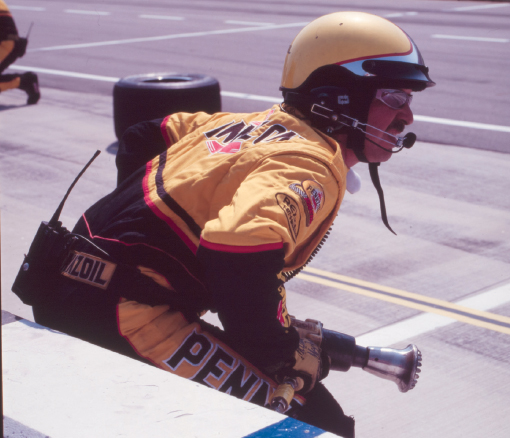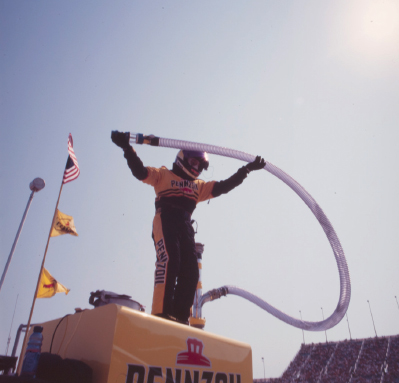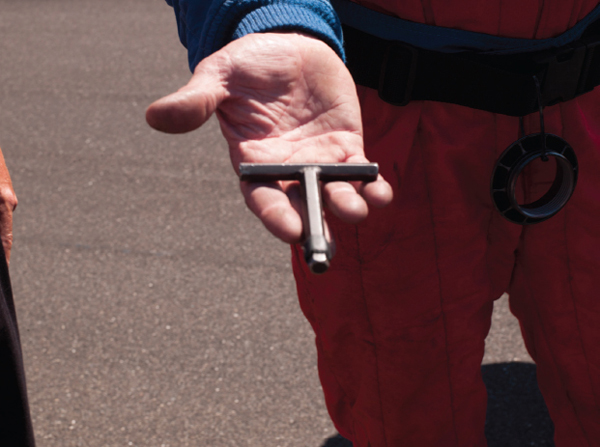
7
THE RACE TEAM

THE SETUP for race day is a coordinated effort by the dozen or more key specialists who are under the direction of the team leader or head engineer. These specialists busy themselves in the confines of their designated pit area and may (or may not) be among the mechanics, fuelers, and tire changers that are fire-suited and helmeted so that they may go “over the wall” to service the needs of car and driver in the heat of the race. Prior to the race they will attempt to optimize (tweak) hundreds of variables to meet the track and atmospheric conditions at hand. Some of these “setup” factors include transmission gear ratios, aero package, dampers (shock absorbers), binders (brakes), tire composition, tire pressure, pit strategy, and fuel strategy. Competitive factors leading up to race day can include wind-tunnel testing, computer simulations, tire testing, driver conditioning, pit crew fitness, and hours of practice in hope that the driver can observe the exact speed limit on pit lane, bring the car to a perfect stop in the pit box, have all four tires changed, and fill the tank with up to 18.5 gallons of ethanol—all in about seven seconds! That accomplished, the team hopes for ideal “launch control.” The car is lowered from its jacked-up position, the crew clears away old tires, tools, air hoses (and themselves), fueling hoses are disengaged and cleared (a crewman spritzes a precautionary jet of water on the fuel-fill area and on a set signal), the driver perfectly engages gears, revs, and then accelerates as he (or she) spins the new tires (it helps to warm them) and aggressively joins the line of traffic leaving pit lane.


Panther Racing preparing to do what they’ve rehearsed a thousand times.

The “dead man” is using gravity after a fueling to drain the “dregs” left in the hose back into the supply tank.

A fist pump from Mike Griffin of Panther Racing after a smooth tire change.

Showing all the parts of a practice pit stop/tire change.

This crewman, whose main job “over the wall” is tire changer, has used his welding skills to fashion a custom “nose wrench” for use when that assembly must be renewed.
